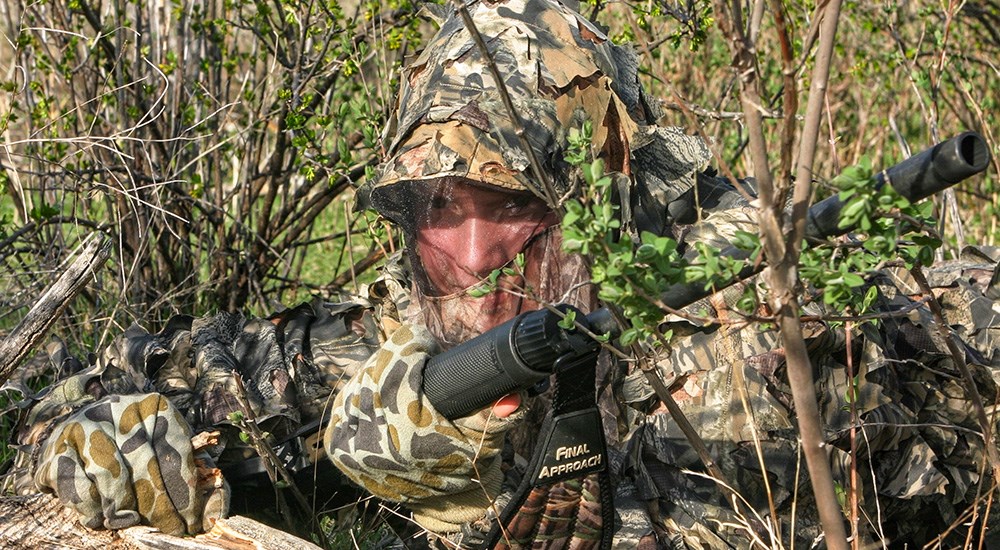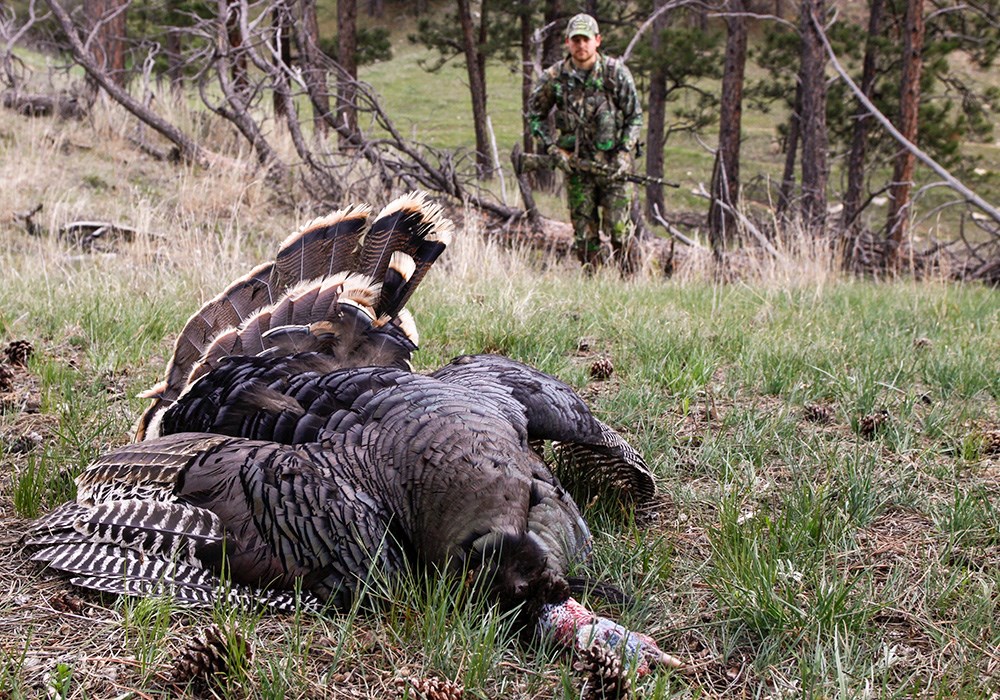
Your mere mention of stalking turkeys during the spring season could cause you to be an outcast in some hunting circles. In Pennsylvania, the practice could land you with a hunting violation. One Pennsylvania Game and Fish Commission publication, partnered with the Pennsylvania Chapter of the National Wild Turkey Federation, even refers to it as “unethical.”
Curb your tongue and read up on state hunting regulations. Or, if you do not mind being shunned and have legal approval, stalking a stubborn tom that frustrates you with the parking brake engaged may be your saving grace for the season. Have situational awareness of others for safety and then, stalk on.
Why Stalk?
Spring turkey seasons revolve around the act of luring a tom to you utilizing turkey vocalizations, oftentimes paired with decoys. When it works, the experience is unforgettable. The first tom I lured in with calls nearly landed me auditions for a Depends undergarment commercial. Yes, it was that exciting!
Unfortunately, turkeys, like most hunted game species, quickly learn to avoid you, dodge your tactics and even duct tape their beaks shut to elude your dogged pursuit. Your pressure, combined with likely pressure from others sharing the property or public land pursuers, prods most turkeys into an unresponsive state of being. Duct tape humor aside, even pressured toms still occasionally pop off a gobble giving you an approximate waypoint of their location. That still does not put you in control of their actions. Despite your best sexy hen impersonation, many toms still remain in long-term parking.

An even worse scenario involves turkeys that simply do not talk. They stick close to the flock and use visualizations instead of mouthing off to track lady friends. You may get a roost gobble, but do not bet on it. When those duct-taped birds hit the ground, it could easily be the end of the conversation. On a past hunt, a buddy and I ended up hunting some true prairie birds in South Dakota that roosted in a grove of trees I could count on one hand. When those birds left the roost, they never talked again. Tag soup for me.
Regardless of why the turkeys in your hunting area go silent, hunting pressure or from natural predation, even in semi-dense habitats, you still can stalk a bird. Turkeys, like whitetails, are creatures of the edge. The edges may be large open expanses or subtle transition zones in forest settings, but those environments allow for spotting as turkeys pick along these food-rich locales.
How to Be a Success
Stalking a turkey becomes risky business. Even though they sport a brain the size of a nut, it connects to senses that allow turkeys to rival Ring doorbell security. You do not need to worry about their sense of touch or taste, but worry about sight and hearing. Their eyes, despite a monocular makeup, spy danger and judge the perceived distance quickly with the twist of the noggin. They also scan for 360-degree danger using that same quick swivel of the head. You know they hear well from the response of distance gobbles you can barely perceive. Research indicates they hear better than humans at long range, plus pick up sounds of a lower pitch than you. A direct look at the sound location typically allows them to march to within a few feet of the maker if they are in the mood.
Note these turkey security measures and stay quiet and out of sight to complete a successful stalk. In addition to evading turkey senses, consider landscapes with stalking cover. Your years of insight while hunting a favorite property become invaluable while hustling after a turkey during a stalk. Although turkeys often prefer to travel on level ground, small variations in elevation created by coulees, creeks, hills and even irrigation ditches, provide cover to veil your upright form. When fully stretched vertically, a wild turkey may stretch 3 feet or more, but most spend their days in a humped configuration as they scan for their next meal. This helps you hide knowing they do not move around in a geeky, erect fashion.
On new ground, a hunting app like HuntStand provides a view of what is ahead in the palm of your hand. Various screen layers offer 3D Map views, topography overlays, tree cover and traditional satellite images, plus more. Scrutinizing your best route to turkeys, spotted or their perceived location, ensures an invisible approach.

As important as your invisibility is to the stalk, you must also have knowledge of turkey patterns on a property. Agricultural fields, food plots, oak hollows, water (in semi-arid locations), roost locations and morning strut zones all could attract a turkey, a flock, or lone gobbler looking for love. As important as traditional gathering spots can be to your success, note all riparian zones, building sites and even old roads that may crisscross a property. Turkeys love to follow waterways and loiter around abandoned farmsteads. They also take the path of least resistance and follow old trails during their schedule. Main trails and roads speed up your movement around a parcel, plus lure turkeys for their ease of travel.
Lastly, be a weather watcher. Breezy conditions, fog, drizzle and even snow for some early-season outings provide a cloak to slip up on overly cautious turkeys. Hourly forecasts on your hunting app aid in altering your strategy as the day plays out. Wind may cancel opportunities at calling, but opens opportunities for a stalk, especially on a hunt that includes a tight deadline.
Merge New with Old
Stalking a turkey requires an invisible approach. Most of my stalks ultimately cumulated with a belly crawl to seal the deal while slithering through pasturelands, prairies and woodland glades. When stubborn turkeys stayed just out of shooting range with no intentions of trotting to a call, I slipped an antiquated foam decoy on my hand to puppeteer a curious tom closer. Today you can also make a gobbler budge via the craze of fanning.
Make sure this aggressive tactic is legal in your state. Pennsylvania has prohibited the practice due to safety concerns. And only use the tactic in remote, private or hunter-free areas where you can be assured of not being stalked yourself.
Safety noted, utilize your own dried fan or a manufactured model, like the Fanatic Reaping Decoy from Montana Decoy that even includes a mesh window to monitor the action. Crawl as close as possible, maybe stake a hen decoy beside you and fan, imitating an infatuated gobbler. For tenacious toms, forget the hen and slowly slide your way through the grass with the fan covering your true intentions. When it works, Katy bar the door from impending tom trouble.
If you do not mind hearing whispers about your stalking endeavors in the background at a gathering of hunters, keep a stalking attack ready for deployment. You may not need it, but when birds snub your contest-winning calls, a stealthy advance may put you on track for an early Thanksgiving.




































